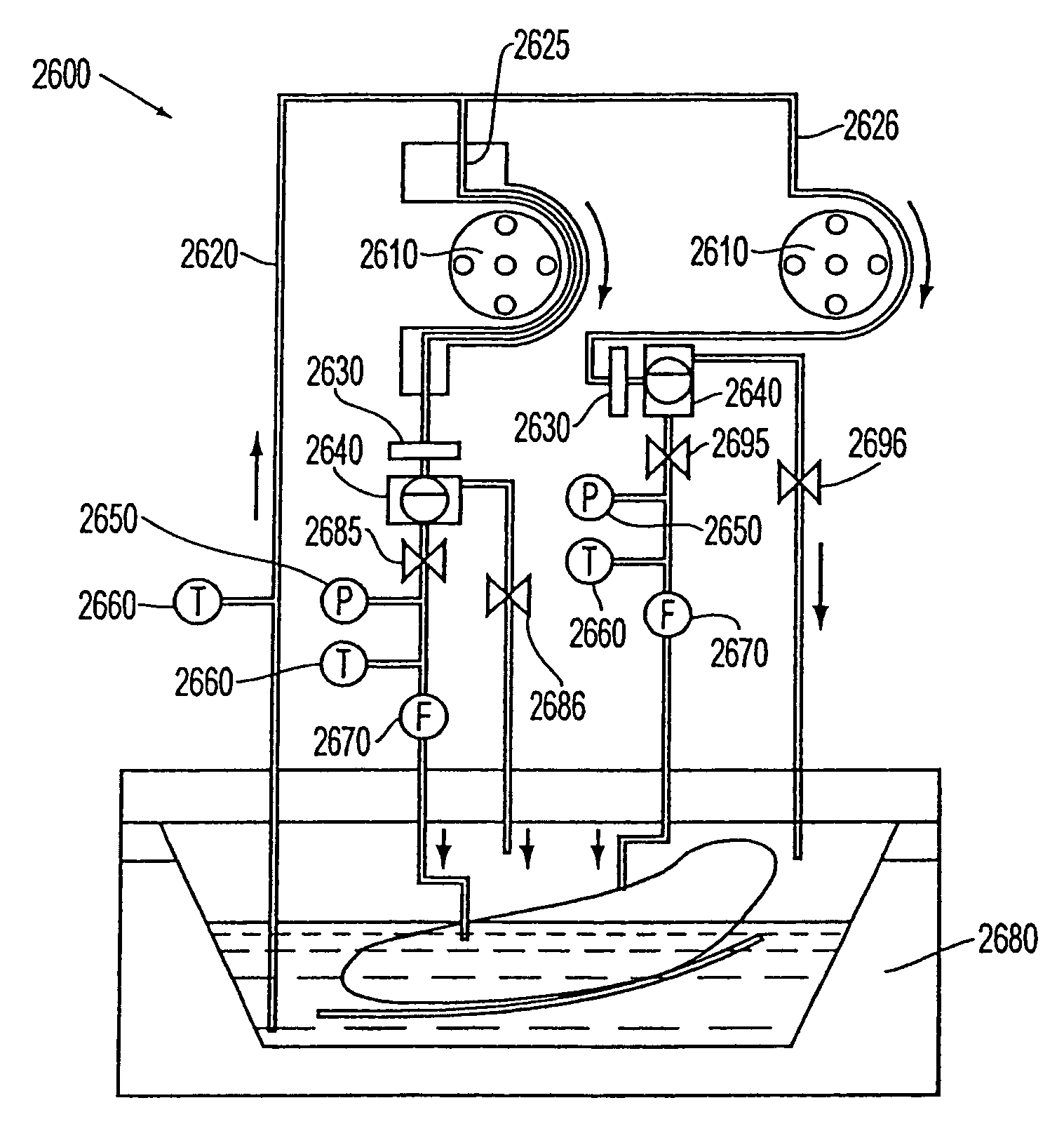Apparatus and method for maintaining and/or restoring viability of organs
a technology of organs and apparatus, applied in the field of apparatus and methods for maintaining and/or restoring organ viability, can solve the problems of damage to organ tissue, increase the risk of organ overpressurization, so as to achieve the effect of easy and safe movemen
- Summary
- Abstract
- Description
- Claims
- Application Information
AI Technical Summary
Benefits of technology
Problems solved by technology
Method used
Image
Examples
Embodiment Construction
[0059]For a general understanding of the features of the invention, reference is made to the drawings. In the drawings, like reference numerals have been used throughout to designate like elements.
[0060]FIG. 1 shows an organ perfusion apparatus 1 according to the invention. FIG. 2 is a schematic illustration of the apparatus of FIG. 1. The apparatus 1 is preferably at least partially microprocessor controlled, and pneumatically actuated. The microprocessor 150 connection to the sensors, valves, thermoelectric units and pumps of the apparatus 1 is schematically shown in FIG. 3. Microprocessor 150 and apparatus 1 may be configured to and are preferably capable of further being connected to a computer network to provide data sharing, for example across a local area network or across the Internet.
[0061]The organ perfusion apparatus 1 is capable of perfusing one or more organs simultaneously, at both normothermic and hypothermic temperatures (hereinafter, normothermic and hypothermic per...
PUM
| Property | Measurement | Unit |
|---|---|---|
| temperatures | aaaaa | aaaaa |
| temperatures | aaaaa | aaaaa |
| temperatures | aaaaa | aaaaa |
Abstract
Description
Claims
Application Information
 Login to View More
Login to View More - R&D
- Intellectual Property
- Life Sciences
- Materials
- Tech Scout
- Unparalleled Data Quality
- Higher Quality Content
- 60% Fewer Hallucinations
Browse by: Latest US Patents, China's latest patents, Technical Efficacy Thesaurus, Application Domain, Technology Topic, Popular Technical Reports.
© 2025 PatSnap. All rights reserved.Legal|Privacy policy|Modern Slavery Act Transparency Statement|Sitemap|About US| Contact US: help@patsnap.com



